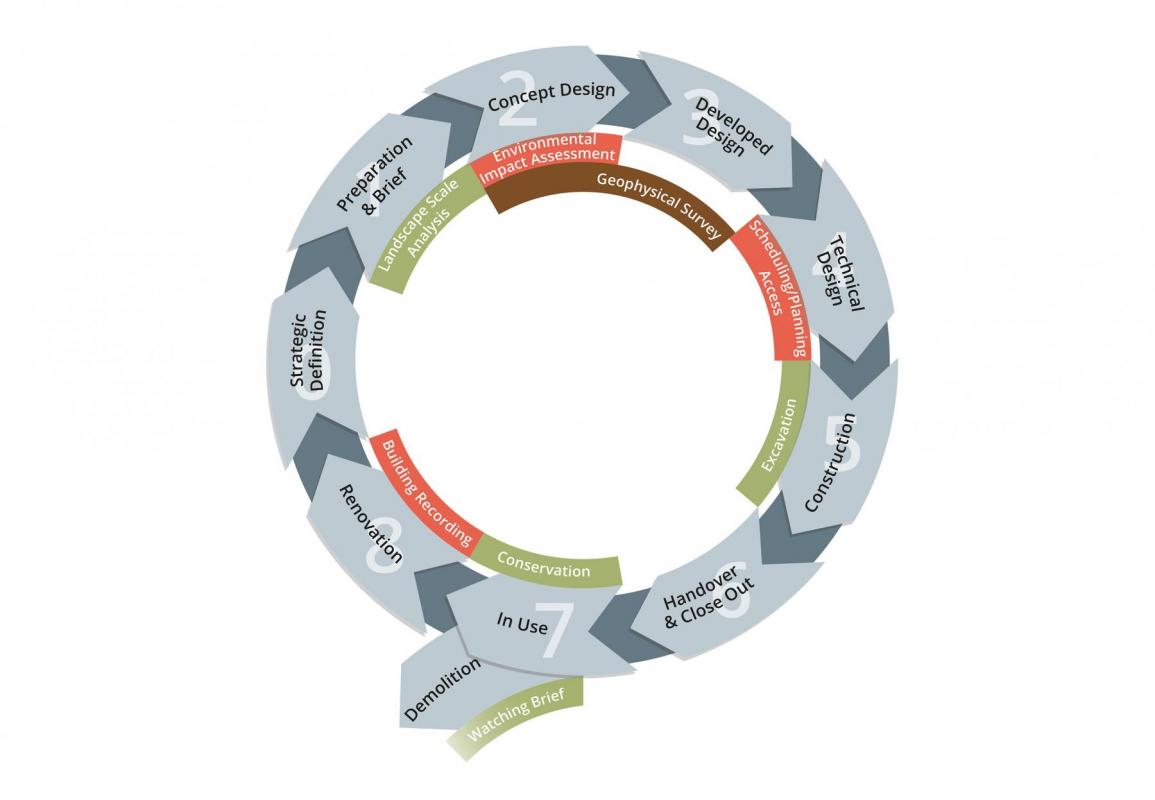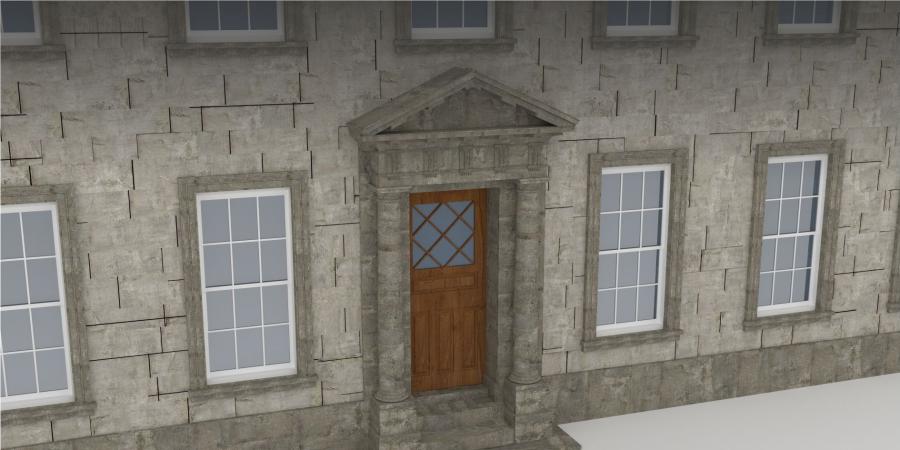What is BIM?
The UK Government drive to reduce CAPEX and OPEX costs by 20%, and minimise risk through the use of Building Information Modelling (BIM) has resulted in widespread adoption across the construction industry, making it more efficient, successful and stable. The clear benefits of BIM mean that it is now used by firms large and small, whether working on public or private sector projects.
BIM is far more than the use of certain software or 3D modelling; it is a project, data and resource management process with a focus on integration and collaboration. This requires the use of 3D data, collaborative tools, clear documentation and strict contract control, all under a framework of industry standards.

How archaeology can fit into the BIM process during the RIBA Plan of Works cycle.
BIM for Heritage
The principles of BIM can also be applied to heritage projects, both with historic buildings and infrastructure projects, to gain the same client benefits seen in the rest of the construction industry.
Archaeological works can have a great impact on the design of various aspects of schemes, such as timescales, layouts and planning conditions. By incorporating heritage contractors into the BIM process projects can be run more efficiently, time and space conflicts can be avoided, and planning conditions can be better understood by scheme designers.
One of the key elements of a successful project is early engagement of all contractors and BIM puts this at its heart.
We recommend clients clearly define what they want to use BIM for in their project and detail their requirements in an Employers Information Requirements document (EIR) before seeking responses from contractors.
For more information on some of the ways BIM can be utilised in a heritage context you can also read our four part article series in BIM Today magazine issues 3-6.
Team



Get in touch
Contact Chris Breeden, Head of Geomatics
